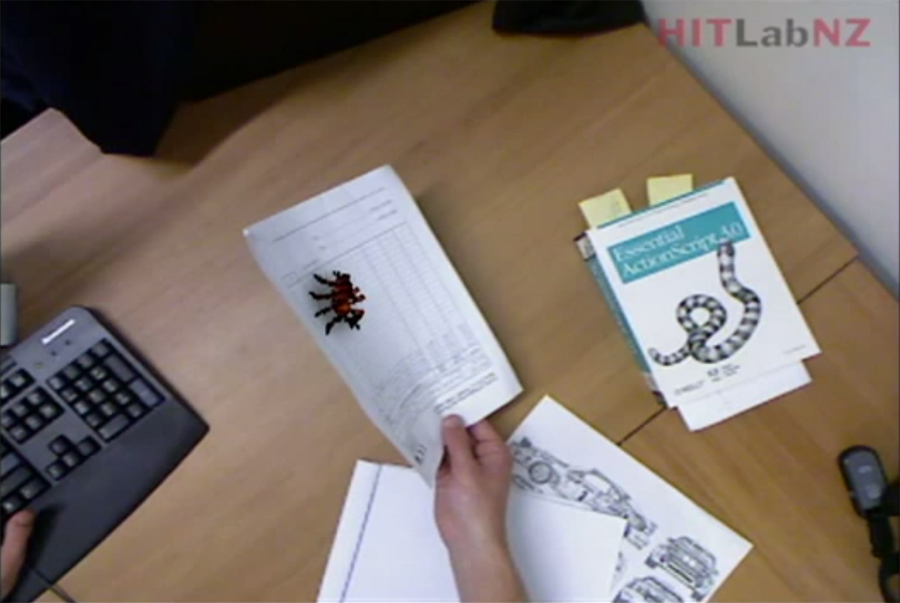Virtual Reality Spiders Crawl Toward Phobia Treatment

Researchers have created an augmented reality application that fills your desk with virtual hairy, red-and-black patterned spiders. The spiders even interact with real things on the desk, crawling over books and disappearing under pieces of paper. That's probably not appealing to most people, but the research team, which includes a psychologist, hopes it will become a next-generation treatment for people with arachnophobia, which is a fear of spiders. Virtual reality spider phobia treatments already exist, but this application is particularly realistic, allowing people to poke the virtual spiders, pick them up and let them crawl up their arms. "People can have this next level," said Adrian Clark, a computer scientist who worked on the application. He and his colleagues are part of the Human Interface Technology Lab at the University of Canterbury in New Zealand.
To map the 3D environment of a desk or any tabletop, Clark and his colleagues used a Microsoft Kinect that looks down at the desk from above. The Kinect sends the information it sees to a computer. Inside the computer, software that lab members developed visualizes the spiders and determines the physics of spider interactions, creating a simulation of how virtual spiders should behave in the real world, Clark explained. The computer sends its simulation to a pair of augmented reality viewing glasses users wear.
Lab members originally wrote the software in 2011 for a toy car racing game, in which small virtual cars zoom around a tabletop, realistically rounding behind books and flying off paper ramps. To adapt the software for phobia treatment, researcher just had to change the graphics from cars to spiders and alter the program's behaviors from driving to crawling, Clark said.
One benefit of the virtual spiders is that their personalities are programmable. They can be intimidated by the user or aggressive, depending on where patients are in their treatment regimen, Clark told InnovationNewsDaily. Treating psychologists can add more spiders to the scene as their patient's treatment progresses.
The lab has shown the arachnid application informally at conferences, but hasn't yet published any papers on the program for peer review. Non-spider-phobic people who have tried the program have an "overwhelmingly positive reaction," said Clark, who added that he’s pleased with his work’s realism. People who interact with the virtual spiders say they feel fear and revulsion, even though they know the leggy crawlers aren't real.
Before the lab submits a paper, they want to show the program to some volunteer patients and record their reactions. They're also working on some improvements to the software, Clark said, including the ability to squish the spiders, which would help patients feel they're in control.
See if you want to squish the spiders after watching them here:
Get the world’s most fascinating discoveries delivered straight to your inbox.
This story was provided by InnovationNewsDaily, a sister site to LiveScience. You can follow InnovationNewsDaily staff writer Francie Diep on Twitter @franciediep. Follow InnovationNewsDaily on Twitter @News_Innovation, or on Facebook.


